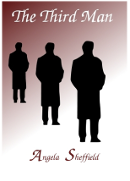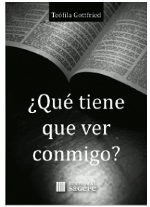Truth really can be stranger than fiction.
First Page - Now launched! All the stories are true, or based on real events. Unlimited reading for $4.99 / month. No downloads. Read on your phone, tablet or computer.
La verdad puede ser más extraña que la ficción.
First Page - ¡Ya está en marcha! Todas las historias son verídicas, o están basadas en hechos reales. Lectura ilimitada por $4.99 / mes. No hay que descargar nada. Lea en su teléfono, tableta u ordenador.
Manna Minutes Podcast: Eye-opening Bible study in less than five minutes! Access all episodes here.
Manna Minutes en español:
Estudio bíblico que nos hace abrir los ojos en menos de cinco minutos! Acceda a todos los episodios aquí.
Manna Minutes Podcast auf Deutsch:
Augenöffnendes Bibelstudium in weniger als fünf Minuten! Alle Episoden finden Sie hier.
Was There A Curse On Helen's Romantic Life?
The Third Man by Angela Sheffield is based on a true story. Read chapter one now!
View Content By Specific Category
¿Qué tiene que ver conmigo? por Teófila Gottfried
Lo que leemos en la Biblia tiene que ver con todos los seres humanos, sean cristianos o judíos, ateos o agnósticos, budistas, musulmanes o adherentes a alguna de las filosofías o nuevas religiones que surgen en el mundo. ¿Por qué? Ver mayor información sobre este interesante libro.
Scripture of The Day - St. John 14:6
Jesus saith unto him, I am the way, the truth, and the life: no man cometh unto the Father, but by me.
Escritura del día - San Juan 14,6
Jesús le dijo: Yo soy el camino, y la verdad, y la vida; nadie viene al Padre, sino por mí.
Bibelstelle des Tages - Johannes 14,6
Jesus spricht zu ihm: Ich bin der Weg und die Wahrheit und das Leben; niemand kommt zum Vater, denn durch mich!
EMS Respiratory Patient Assessment

The Elements of EMS Patient Assessment
Although our focus here is specifically on respiratory patient assessment, the elements of all emergency medical services (EMS) patient assessement are included. Also, the interventions included pertain to the advanced emergency medical technician (AEMT) student, not to the EMT or paramedic student. As you progress through the elements of this respiratory patient assessment, think on what you are doing and why you are doing it. It also is a very good idea to obtain the help of family and friends who will be your practice patients.
The Beginning of Respiratory Patient Assessment
As the AEMT student goes before the examiner for practicals, he or she will need to show and verbalize the following. NOTE: These guidelines are based specifically on the scope of practice for the AEMT for the state of Iowa.
1. Body substance isolation (BSI) - make sure you show that you have the bare minimum protection of gloves.
2. Scene safety - If the examiner does not tell you that your scene is safe, make sure to ask if it is.
3. Mechanism of injury (MOI) or nature of illness (NOI) - If the examiner does not specifically tell you the MOI or the NOI, make sure you determine what it is by asking him/her questions and/or by questioning your mock patient.
4. Number of patients - verbalize the number of patients you have even if only one.
5. Verbalize whether you need additional help (to call for paramedics).
6. Decide, based on the MOI, whether you need to hold cervical spine, commonly called "c-spine."
7. State your general impression of the patient. For example, "My general impression is of a mid 40s male in severe respiratory distress."
8. Determine the responsiveness/level of consciousness (LOC) of your patient. You can use AVPU for this. If you don't know what AVPU is, you probably shouldn't be attempting to test.
9. Determine chief complaint of the patient (usually in patient's own words).
10. Assess your patient's breathing. Is he/she breathing adequately? You should know that adults should breathe between 12 and 20 times per minute with good tidal volume. At this time, you'll need to provide appropriate oxygen therapy. That therapy might be 15 liters by non-rebreather, between 2 and 3 liters by nasal canula, or you might have to assist respirations with a bag valve mask (BVM).
11. Assess your patient's circulation. This means controlling any major bleeding there might be. It also means determining the rate and quality of the pulse as well as the color, temperature and condition of the skin. This allows you to know whether to be suspicious of threats such as the early stages of shock.
12. Make a transport decision. By this time, you should know whether your patient is a high-priority transport.
13. Focused history and physical exam/rapid assessment - Use OPQRST for your medical patients. Again, if you do not know what this is, you probably are not ready to test. A link to our article on OPQRST is at the end of this content. Because we are focusing on a respiratory patient assessment, there are some specific questions we should ask to gather pertinent information. They include:
a. Do you have a cough?
b. If they have a cough, ask, "Is the cough productive?"
c. If the cough is productive, ask, "What color is the sputum?"
d. Ask about hemoptysis (spitting up blood). Please don't use the medical term "hemoptysis." Simply, ask, "Are you coughing up any blood?"
e. Do you smoke?
f. If they don't smoke, ask, "Are you exposed to second-hand smoke?"
g. Have you done anything to relieve your breathing difficulty? (The patient might have a prescribed inhaler. If so, ask how many times they have used it.)
h. Who is your doctor?
The above questions, along with OPQRST, complete the the "S" of SAMPLE. You're now ready to move to the "AMPLE" that's left of SAMPLE.
14. Ask about:
a. A - allergies the patient might have
b. M - if the patient is on any medications (This includes prescription, over-the-counter, and herbal medications.)
c. P - past pertinent history (Find out if the patient has a history of respiratory problems such as asthma and if they've been hospitalized for any such problems.)
d. L - last oral intake (Remember that a breathing problem can be a sign of an allergy to a food.)
e. E - events leading to the illness or injury (This is the same thing as the "O" in OPQRST. What was the patient doing when injury occurred or when the sickness came on?)
15. Focused exam - Listen to lung sounds. Absent or diminished sounds are a significant finding. Note any abnormal patterns of breathing. This is a focused exam specifically for a respiratory patient assessment. There are differences in the focused exam for a patient with an acute abdomen.
16. Take vital signs (You've taken all vitals except for a blood pressure.)
17. Verbalize and perform mock interventions you plan to carry out. All life-threatening problems such as an apneic patient should have been addressed in the initial assessment. AEMTs in Iowa can give albuterol. Know the appropriate dosages: 2.5 mg diluted with 2.5mL normal saline for adults; and 0.15mg for pediatric patients. Contraindications include: hypersensitivity, tachycardia, and arrhythmias. You should also know the adverse reactions that can occur such as restlessness, tremors, an increased blood pressure, etc.
18. Restate your re-evaluated transport decision. Verbalize that you will evaluate your patient's response to treatment by repeating your focused assessment and the taking of vitals.
Knowing these guidelines should help you to learn how to effectively perform a respiratory patient assessment.
EMS Articles by Heavenly Manna
How an EMT Uses OPQRST for Medical Patient Assessment
Christian Paramedics and Emergency Medical Technicians: The Challenges Faced
From Basic to Advanced Emergency Medical Technician
EMT Basic Training and EMT experience: Bridging the Gap - Part I
 Based on true events, The Third Man by Angela Sheffield, brings the Bible up close and personal as the characters face real issues of life: Betrayal, deceit, romance, bitterness, anger against God, hopelessness, will power, perplexity, triumph, unforgiveness, mental illness, and the "Alcohol made me do it" excuse. Read chapter one FREE now.
Based on true events, The Third Man by Angela Sheffield, brings the Bible up close and personal as the characters face real issues of life: Betrayal, deceit, romance, bitterness, anger against God, hopelessness, will power, perplexity, triumph, unforgiveness, mental illness, and the "Alcohol made me do it" excuse. Read chapter one FREE now.
Copyright notice: This website and its content is copyright of © Heavenly Manna (HeavenlyManna.net) 2002-2016.
Comments/Comentarios:
Send Comments or a Private Message about One of Our Services / Envíe Comentarios o un Mensaje Privado acerca de nuestros servicios
Once comments reach 10, they close. IF YOU USE PROFANITY, WE WILL REJECT YOUR COMMENT AUTOMATICALLY.
We're a small team, please be patient as we review comments.
©2003 - 2013 Heavenly Manna Ministries
Images: courtesy of Free Digital Photos, openstockphotography.org, FreeFoto.com, Wikimedia Commons. Multiple crosses image - Wikimedia Commons - C.G.P Grey - Animation by Heavenly Manna










